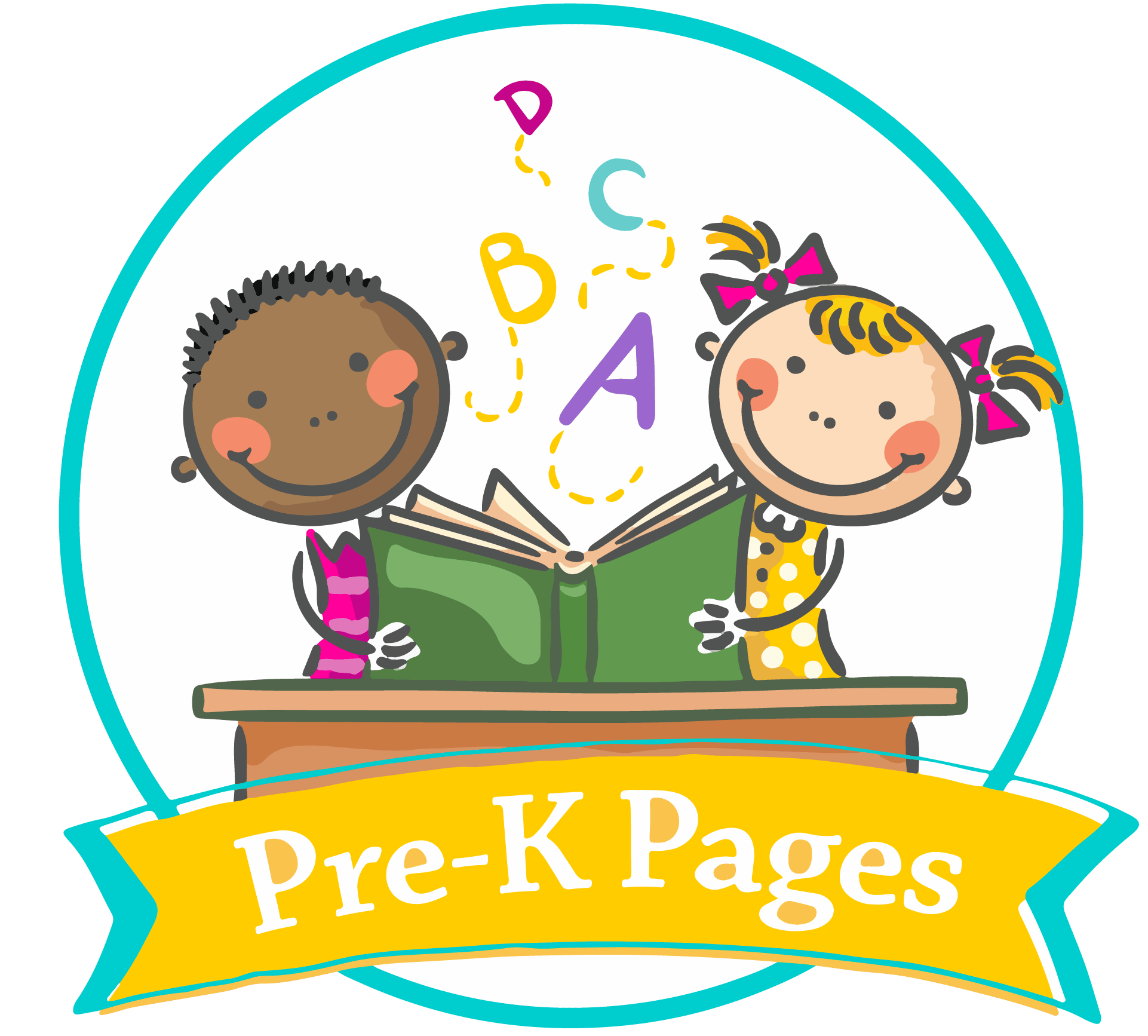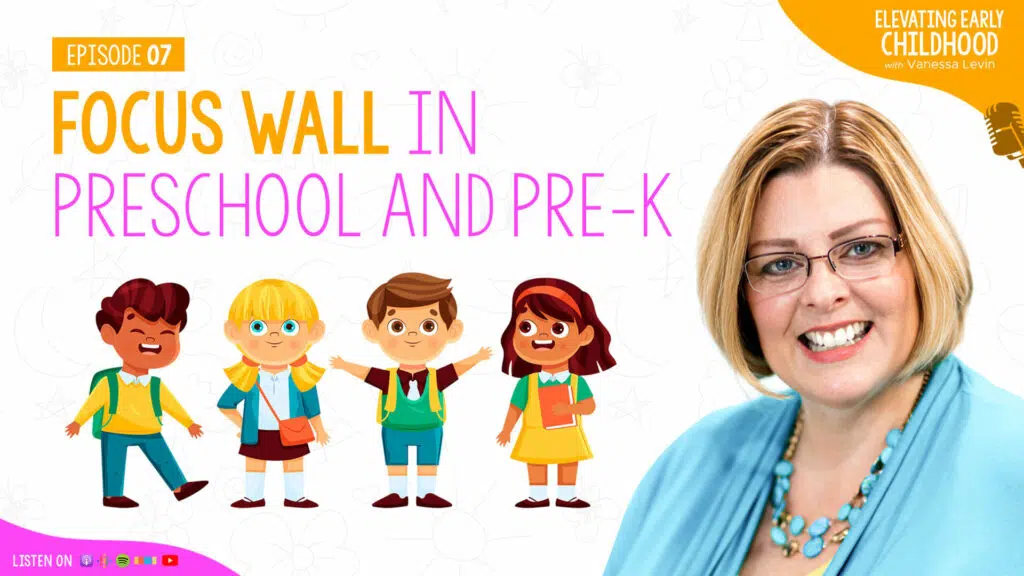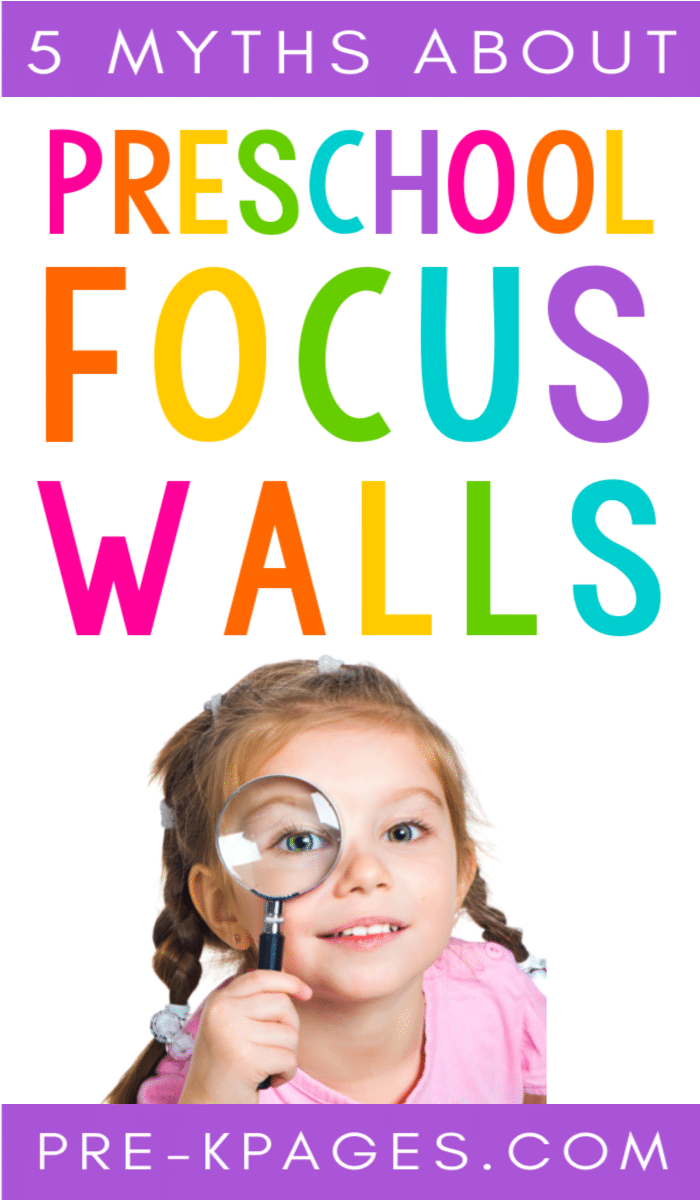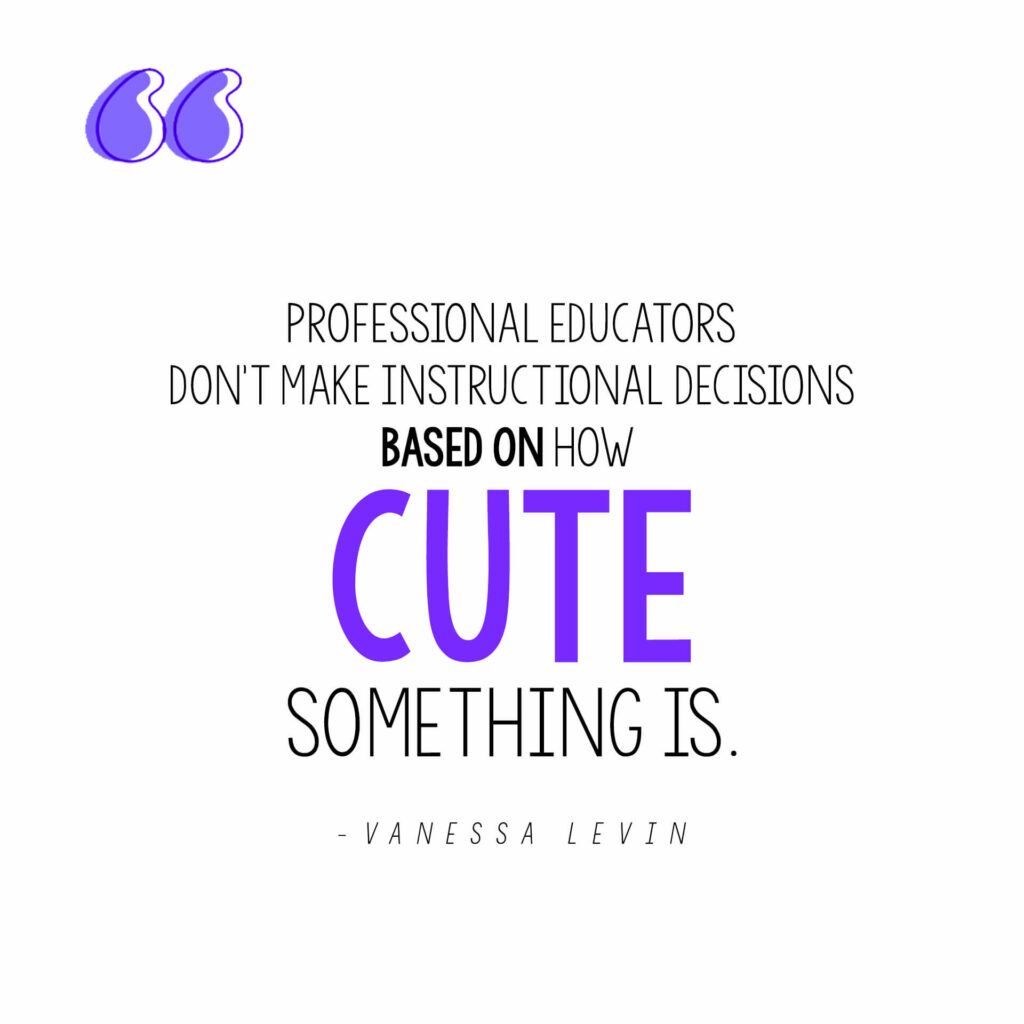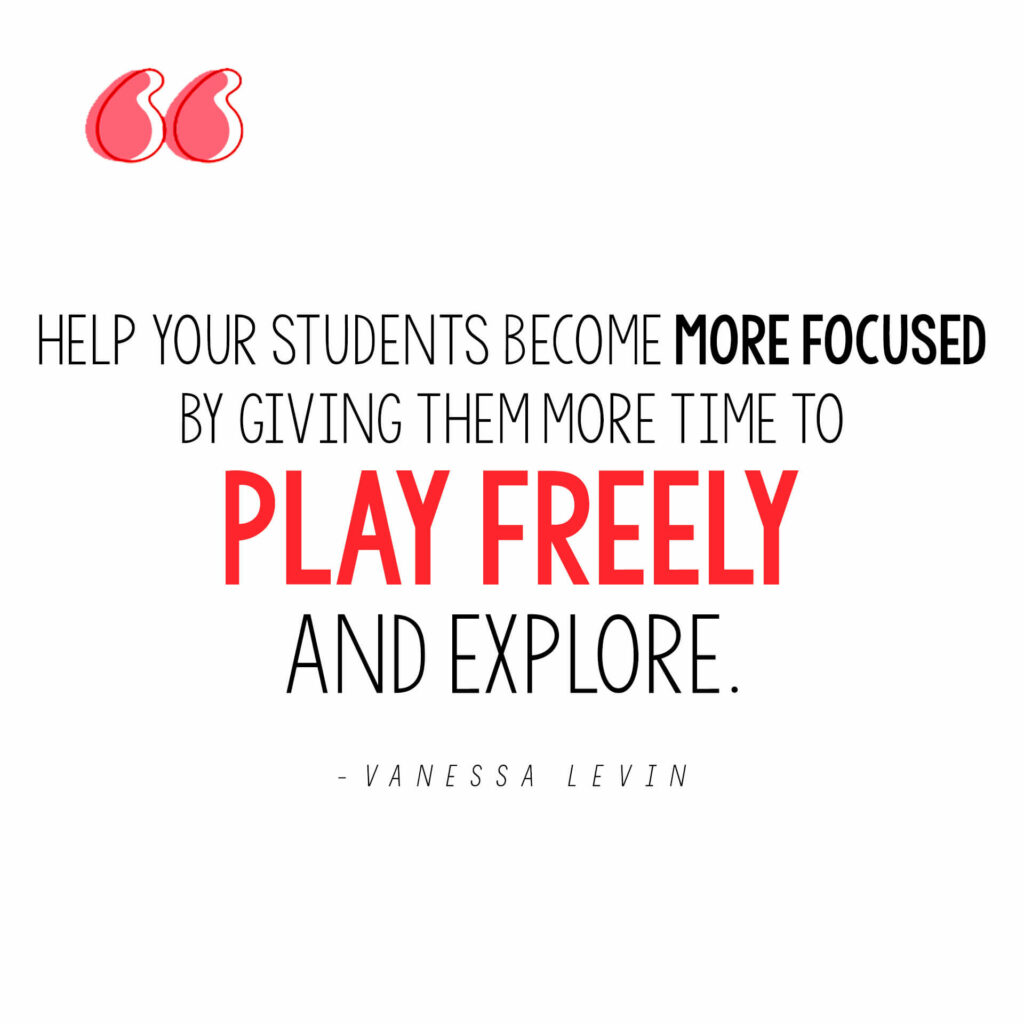Are focus walls REALLY an effective teaching tool for preschool and pre-k? Find out on our first ever “Calm Down Corner” episode of our podcast!
As early childhood professionals, we’re frequently exposed to misinformation about educating young children. Inappropriate, unfounded practices are being shared on the internet left and right.
Shiny, buzzwordy—and completely opposite to how kids learn!
Not only are they ineffective, but they’re also a massive source of stress and anxiety for teachers because they make us feel like we’re not doing enough.
So to fight back, I’ll be getting on my soapbox from time to time and creating special episodes to dispel these harmful myths about early childhood education.
To get things started, I will bust the five biggest myths surrounding focus walls and their effectiveness. And to end the show on a constructive note, I’m going to share some of the best practices you can apply alternatively!
If you ever have any questions about other dubious early childhood education tips, feel free to reach out, and I might use it in one of my future “Calm Down Corner” specials. We can fight misinformation together!
And now, let’s dive into the show!
What Are Focus Walls?
To understand focus walls better, we first need to explore the achievement gap.
The achievement gap refers to the disparity in academic performance between groups of students. And as expected, there’s plenty of controversy around this idea because it amplifies the inequity that exists in our society between race, ethnicity, and gender.
There have been plenty of practices designed to reduce the gap, and focus walls are one of them.
Focus walls are areas in the classroom which contain learning targets for your students. Most commonly, it’s a section of the wall or a bulletin board with lots of information on it, like posters and pocket charts.
The idea of focus walls has become very popular, but are they effective at helping children learn? Here are the five biggest myths about focus walls!
The 5 Biggest Myths About Preschool Focus Walls
Myth #1: Are Preschool Focus Walls Research-Based?
I’m sure you could find research in support of preschool focus walls. BUT… I challenge you to consider these questions first.
- Was the research conducted on children ages birth to 8 years?
- Were the classes homogenous?
- What segments of the population do the students in the study represent?
- Was the study conducted in the US?
When embracing new practices, we need to be sure they’re relevant for early childhood education. Any research brought up in support of focus walls needs to respond favorably to these questions before pre-k and preschool teachers can consider them.
Some will point to CLT (Cognitive Load Theory) to support their use of a focus wall in Pre-K or preschool. This theory was developed in the 80’s and 90’s and centers on improving the brain’s working memory. Overall, this theory is sound, but the disconnect occurs in the implementation process. Well meaning individuals take the research and try to apply it to certain practices in the classroom, such as visual displays – often in classrooms serving young children. These individuals often have no training in early childhood education and how the brain of a young child learns and grows. This is how the poor practice of “push-down” is perpetuated.
Myth #2: Kids Love Focus Walls, so It Can’t Hurt
This argument doesn’t hold up, and it’s inherently flawed. Children also love cookies — but does that mean they should eat them for breakfast, lunch, and dinner?
Letter of the Week, Number of the Week, Color of the Week… These practices assume that children are empty vessels, and that it’s up to us as teachers to “fill” them with knowledge.
But here’s the thing — children HAVE knowledge already!
In the education field, it’s commonly referred to as background knowledge.
As educators, we should facilitate our student’s learning, while also honoring how their young brains work.
Myth #3: Learning is Linear
We’ve already shown in episode 2 why this isn’t the case, so if you haven’t already — check it out here!
Still, preschool focus walls are based on this false premise and assume all children will learn in the same way. They make it impossible to meet the needs of individual children.
What will happen to kids who fall behind and miss a Letter, Number, or Shape of the week? When will they catch up?
And what about children who already know it before the week starts?
It doesn’t work!
Myth #4: Can a Preschool Focus Wall Help Visual Learners?
Visual aids are indeed excellent for teaching young children. However, we shouldn’t confuse a focus wall with picture cues.
Furthermore, using too many picture cues can be counterproductive. Some children are sensitive to vast amounts of visual stimuli, such as brightly colored posters plastered on your walls. In those scenarios, your kids can quickly become overwhelmed or overstimulated.
Myth #5: A Preschool Focus Wall Can Help Children Focus Their Attention
Children don’t have very large attention spans, so it’s essential they practice, develop and increase them over time. But focus walls won’t be of much use there — because that’s not how children learn to focus!
Let me tell you a story about one of my students from way back in the day. We’ll call him Zach.
Zach was one of those kids you could often find running around the classroom while the other children listened to a story. Or rolling around the carpet during story time.
Maybe you’ve also had a Zach in your classroom?
It would be easy to think that Zach was having attention issues. But if you’d seen him out on the playground, you’d be quick to find that wasn’t the case!
He would routinely spend half an hour hunting for frogs and bugs. He also knew all sorts of facts about frogs. What climates they liked, the noises they made…
And the more time we spent on the playground, the better he was at focusing, to a point where his attention span grew, and he could take part in other activities with his peers as well.
That’s it! The five biggest myths about focus walls busted!
Best Practices to Use as Alternatives to a Preschool Focus Wall
Here are some of the proven, research-based practices that are much more in line with how young children learn:
- A picture schedule
- A student name chart
- Blank paper for writing messages
- Picture books
- Fun songs with fingerplays and props
And if you’d like to learn more about these best practices to use as alternatives, make sure you watch the full episode!
